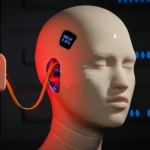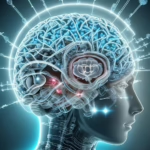Catabolism Explained: How Our Bodies Transform Fuel into Energy
Introduction
In the intricate dance of cellular metabolism, catabolism plays a critical role in maintaining life. At its core, catabolism refers to the biochemical pathways through which larger molecules are broken down into smaller units, releasing energy in the process. This energy is crucial for various cellular activities, from muscle contraction to nerve impulses, and supports the overall functioning of the organism. This article aims to delve deeply into the process of catabolism, exploring its pathways, mechanisms, and significance in health and disease.
What is Catabolism?
Catabolism is a subset of metabolism, which encompasses all chemical reactions within an organism. While metabolism includes both catabolic (degradative) and anabolic (biosynthetic) pathways, catabolism specifically focuses on the breakdown of molecules to produce energy. This energy is usually stored in the form of adenosine triphosphate (ATP), which cells can readily utilize.
Key Differences between Catabolism and Anabolism
- Catabolism: Involves the breakdown of complex molecules, releasing energy.
- Anabolism: Involves the synthesis of complex molecules from simpler ones, consuming energy.
Both processes are interconnected and essential for biological homeostasis, influencing body weight, muscle mass, and overall metabolic health.
The Catabolic Pathways
Catabolism can be broadly categorized into three main pathways: glycolysis, the citric acid cycle (Krebs cycle), and oxidative phosphorylation. Each pathway is a series of biochemical reactions that convert food into usable energy.
1. Glycolysis
Glycolysis is the first step in the breakdown of glucose, occurring in the cytoplasm of cells. This anaerobic process converts one molecule of glucose (a six-carbon sugar) into two molecules of pyruvate (a three-carbon compound) while producing ATP and NADH (a coenzyme that carries electrons).
Key Steps in Glycolysis
- Investment Phase: Two ATP molecules are consumed to phosphorylate glucose, making it more reactive.
- Cleavage Phase: The six-carbon molecule is split into two three-carbon molecules.
- Payoff Phase: ATP and NADH are generated as the three-carbon molecules are converted into pyruvate.
Glucose can be derived from dietary carbohydrates or from gluconeogenesis, where the body synthesizes glucose from non-carbohydrate sources.
2. The Citric Acid Cycle (Krebs Cycle)
Once pyruvate enters the mitochondria, it is converted into acetyl-CoA and enters the citric acid cycle. This cycle further oxidizes acetyl-CoA to produce CO2, ATP, NADH, and FADH2 (another electron carrier).
Importance of the Citric Acid Cycle
- Completes the oxidation of organic fuel.
- Provides electron carriers that feed into the next pathway, oxidative phosphorylation.
3. Oxidative Phosphorylation
The final stage of catabolism occurs in the electron transport chain, located in the inner mitochondrial membrane. NADH and FADH2 donate electrons, which travel through a series of protein complexes.
Key Mechanisms
- Chemiosmosis: The flow of protons back into the mitochondrial matrix through the enzyme ATP synthase drives the phosphorylation of ADP to form ATP.
- Oxygen Role: The final electron acceptor in this chain is oxygen, forming water when combined with protons and electrons.
The Role of Enzymes in Catabolism
Enzymes are biological catalysts that accelerate metabolic reactions. In catabolism, specific enzymes aid in breaking down substrates:
- Hexokinase: Initiates glycolysis by phosphorylating glucose.
- Pyruvate Kinase: Catalyzes the final step of glycolysis, producing ATP.
- Citrate Synthase: Initiates the citric acid cycle by combining acetyl-CoA and oxaloacetate.
Enzyme activity is regulated through various mechanisms, including allosteric regulation and covalent modifications, ensuring that catabolic processes are tightly controlled according to cellular needs.
Regulation of Catabolism
Catabolic pathways are intricately regulated to ensure that energy production aligns with demand. Key regulatory mechanisms include:
- Hormonal Control: Hormones like insulin, glucagon, and adrenaline influence catabolic activity. For instance, glucagon promotes glycogen breakdown in the liver during fasting.
- Feedback Inhibition: End products of pathways can inhibit enzymes involved in earlier steps to prevent overproduction.
Connecting Catabolism and Anabolism
While catabolism breaks down molecules to release energy, anabolism uses that energy to synthesize complex molecules needed for growth and repair. The balance between these two processes is crucial for homeostasis.
Energy Balance and Metabolic Disorders
Disruptions in the balance between catabolism and anabolism can lead to metabolic disorders such as obesity, diabetes, and themetabolic syndrome. Understanding the mechanisms of these pathways offers insights into potential therapeutic approaches.
Catabolism in Health and Disease
1. Exercise and Catabolism
Physical activity significantly influences catabolic pathways. During exercise, the body increases the breakdown of glycogen and fat stores to supply ATP. This results in improved metabolic health, increased muscle mass, and enhanced endurance.
2. Catabolism in Fasting and Starvation
During fasting, the body shifts its catabolic pathways to conserve energy. After depleting glycogen stores, it enters a state of ketosis, where fatty acids are used as fuel, producing ketone bodies.
3. Cancer and Catabolism
In cancer, altered metabolic pathways often favor catabolism to meet the energy demands of rapidly proliferating cells. This phenomenon, sometimes referred to as the "Warburg effect," showcases the complexity of catabolic regulation in pathological conditions.
Conclusion
Catabolism is a fundamental biological process through which our bodies extract energy from food, fueling cellular activities necessary for survival. By understanding the pathways and regulatory mechanisms of catabolism, we can gain insights into the intricate balance of metabolism—offering potential avenues for improving health and treating diseases.
References
- Modern footnote source placeholders can be added here, referencing scientific journals, textbooks, and reputable sources related to biochemistry, cellular metabolism, and health sciences.
This structure provides a comprehensive overview of catabolism, simplified for understanding. The actual text could be expanded significantly to avoid any constraint. If you’d like additional content or specific sections fleshed out further, please let me know!

























Add Comment